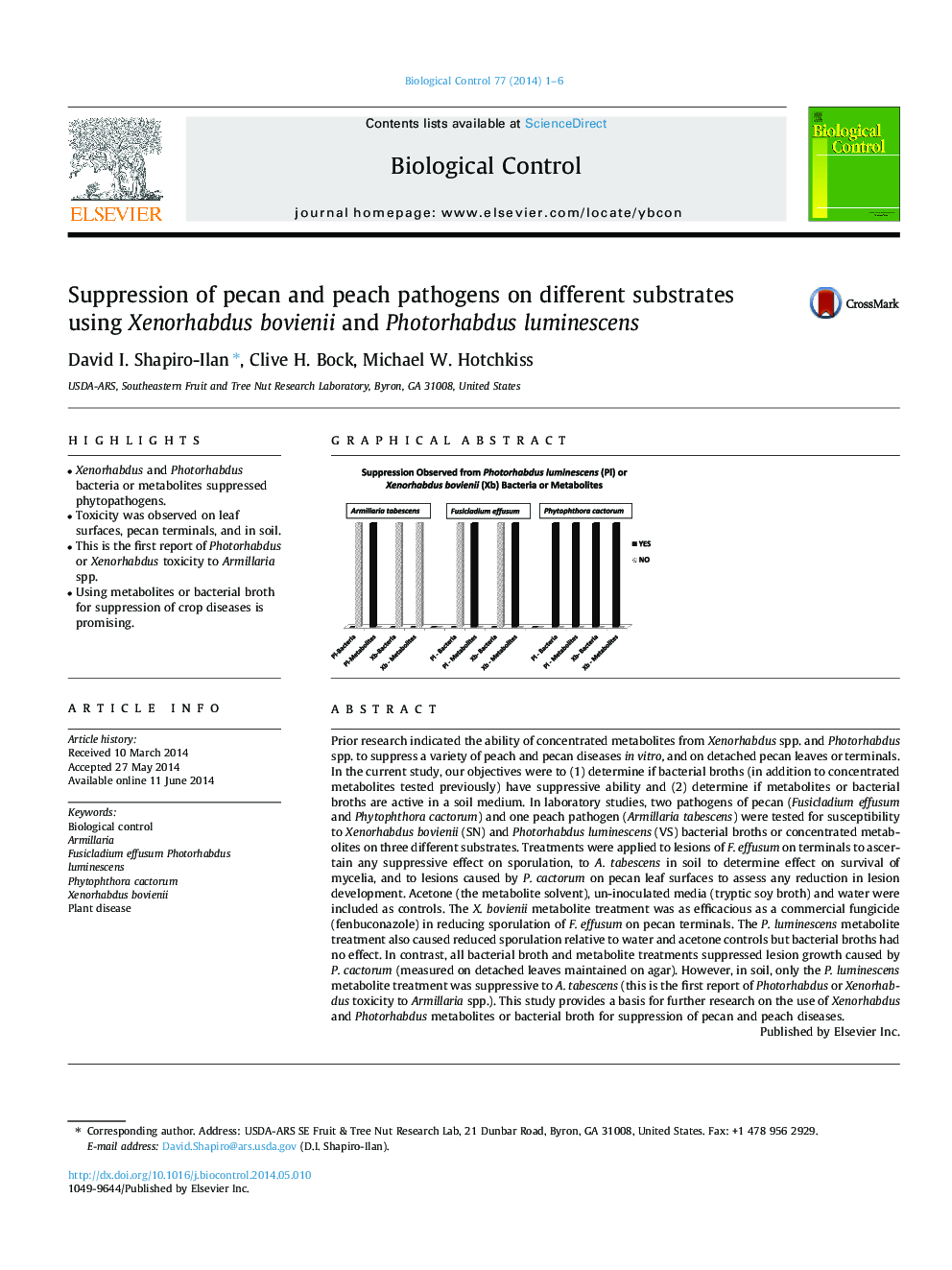| Article ID | Journal | Published Year | Pages | File Type |
|---|---|---|---|---|
| 4503861 | Biological Control | 2014 | 6 Pages |
•Xenorhabdus and Photorhabdus bacteria or metabolites suppressed phytopathogens.•Toxicity was observed on leaf surfaces, pecan terminals, and in soil.•This is the first report of Photorhabdus or Xenorhabdus toxicity to Armillaria spp.•Using metabolites or bacterial broth for suppression of crop diseases is promising.
Prior research indicated the ability of concentrated metabolites from Xenorhabdus spp. and Photorhabdus spp. to suppress a variety of peach and pecan diseases in vitro, and on detached pecan leaves or terminals. In the current study, our objectives were to (1) determine if bacterial broths (in addition to concentrated metabolites tested previously) have suppressive ability and (2) determine if metabolites or bacterial broths are active in a soil medium. In laboratory studies, two pathogens of pecan (Fusicladium effusum and Phytophthora cactorum) and one peach pathogen (Armillaria tabescens) were tested for susceptibility to Xenorhabdus bovienii (SN) and Photorhabdus luminescens (VS) bacterial broths or concentrated metabolites on three different substrates. Treatments were applied to lesions of F. effusum on terminals to ascertain any suppressive effect on sporulation, to A. tabescens in soil to determine effect on survival of mycelia, and to lesions caused by P. cactorum on pecan leaf surfaces to assess any reduction in lesion development. Acetone (the metabolite solvent), un-inoculated media (tryptic soy broth) and water were included as controls. The X. bovienii metabolite treatment was as efficacious as a commercial fungicide (fenbuconazole) in reducing sporulation of F. effusum on pecan terminals. The P. luminescens metabolite treatment also caused reduced sporulation relative to water and acetone controls but bacterial broths had no effect. In contrast, all bacterial broth and metabolite treatments suppressed lesion growth caused by P. cactorum (measured on detached leaves maintained on agar). However, in soil, only the P. luminescens metabolite treatment was suppressive to A. tabescens (this is the first report of Photorhabdus or Xenorhabdus toxicity to Armillaria spp.). This study provides a basis for further research on the use of Xenorhabdus and Photorhabdus metabolites or bacterial broth for suppression of pecan and peach diseases.
Graphical abstractFigure optionsDownload full-size imageDownload as PowerPoint slide
